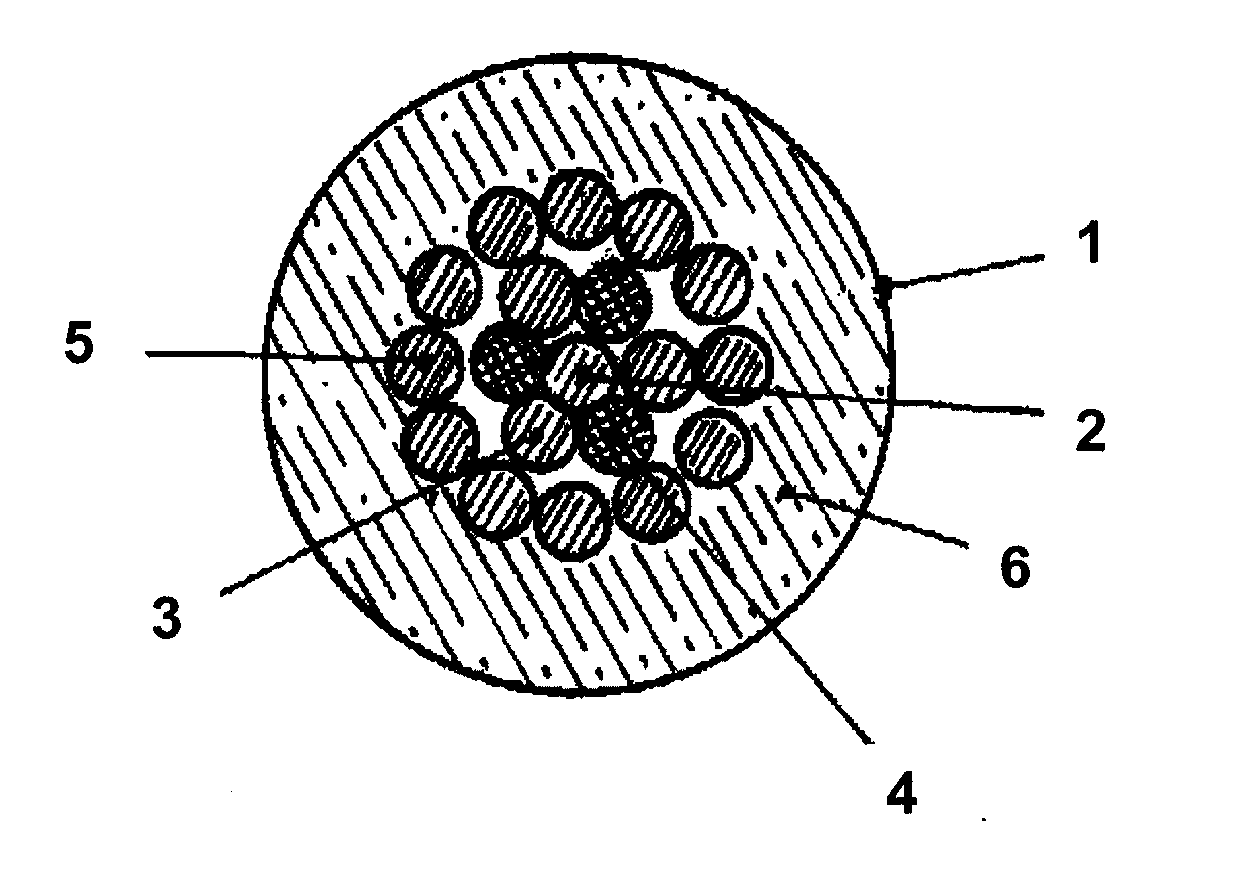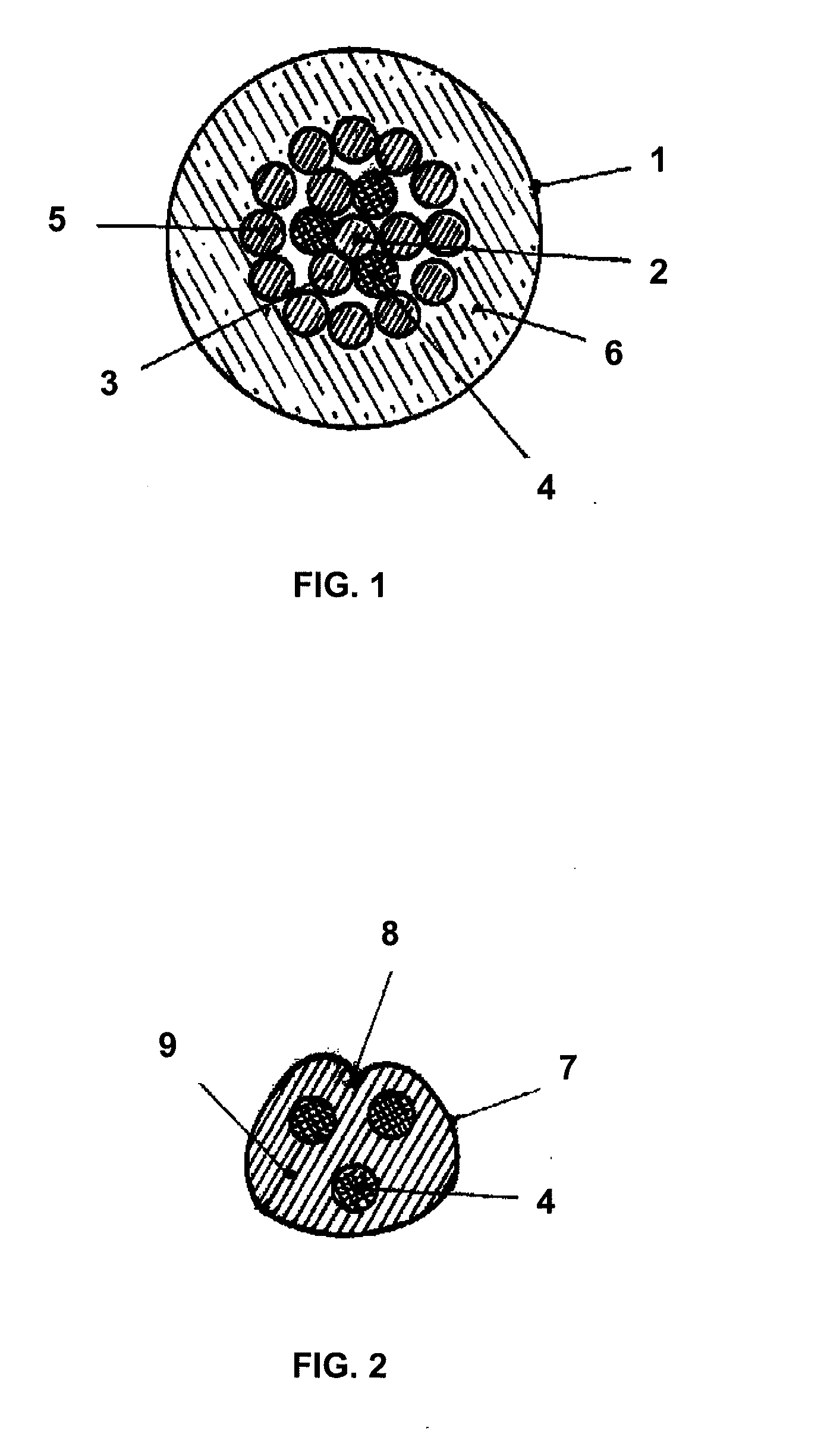Tension-Resistant Electrical Conductor
a technology of electrical conductors and resistive coatings, applied in the direction of flexible conductors, plastic/resin/waxes insulators, organic insulators, etc., can solve the problems of reduced flexibility and corrosion of conductors, and achieve good and lasting electrical contact connections, greater tensile strength, and good tensile strength
- Summary
- Abstract
- Description
- Claims
- Application Information
AI Technical Summary
Benefits of technology
Problems solved by technology
Method used
Image
Examples
Embodiment Construction
[0016]The invention will be described in more detail with reference to the exemplary embodiments shown in FIGS. 1 and 2.
[0017]FIG. 1 shows a sectional view of an electrical cable 1, for example serving as a connecting line for a lambda sensor provided in a motor vehicle. The electrical conductor of this cable 1, according to the invention, comprises a central core wire 2 made of copper. Six individual wires are arranged in a first layer over this core wire 2, wherein these individual wires are configured as copper wires 3 and as steel wires 4, which alternate in succession in the circumferential direction. This results in a star-shaped arrangement of the tension-resistant, and thus somewhat rigid, steel wires 4, and therefore minimally impairs the flexibility of the extremely thin cable. A further twelve copper wires 5 are arranged in a second wire layer which, in the exemplary embodiment, form the outermost wire layer, to which an insulator 6 is finally applied. In the illustrated ...
PUM
| Property | Measurement | Unit |
|---|---|---|
| tensile force | aaaaa | aaaaa |
| diameter | aaaaa | aaaaa |
| diameter | aaaaa | aaaaa |
Abstract
Description
Claims
Application Information
 Login to View More
Login to View More - R&D
- Intellectual Property
- Life Sciences
- Materials
- Tech Scout
- Unparalleled Data Quality
- Higher Quality Content
- 60% Fewer Hallucinations
Browse by: Latest US Patents, China's latest patents, Technical Efficacy Thesaurus, Application Domain, Technology Topic, Popular Technical Reports.
© 2025 PatSnap. All rights reserved.Legal|Privacy policy|Modern Slavery Act Transparency Statement|Sitemap|About US| Contact US: help@patsnap.com


